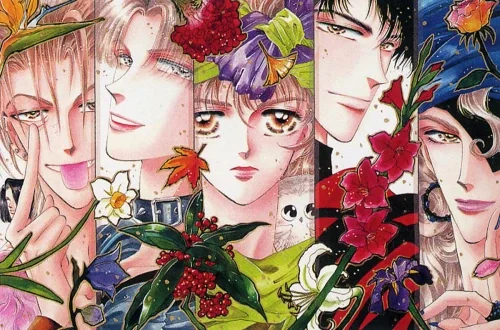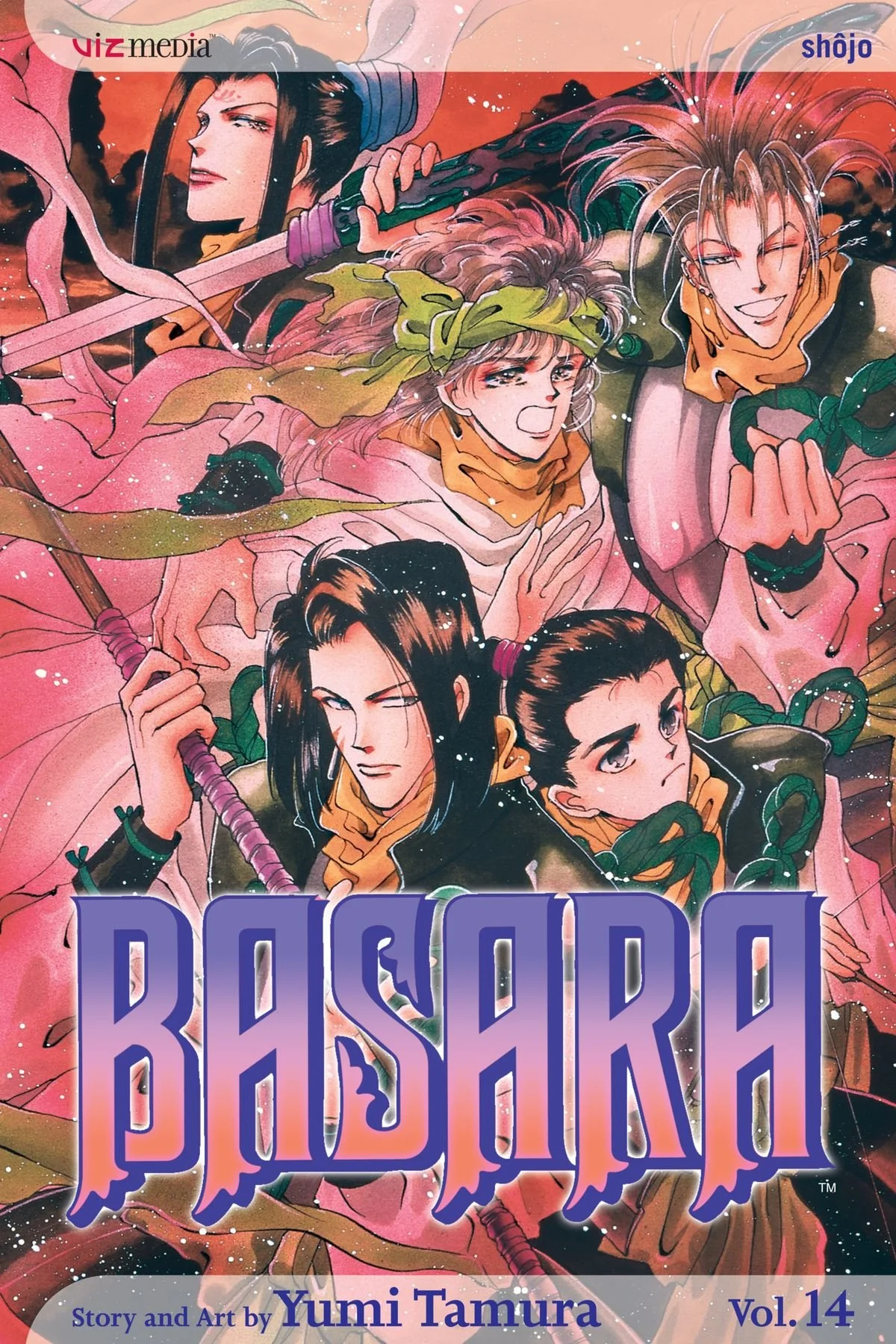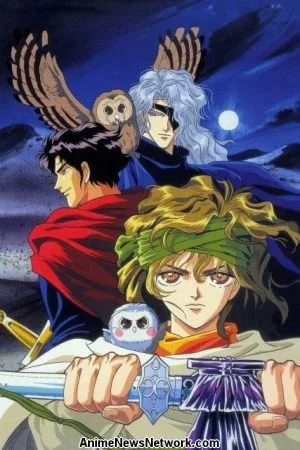Basara: The Hidden Gem of Manga
TLDR: watch my YouTube video here: BASARA manga review: hidden gem you should read
How did I stumble across a manga that would rise so high above the other mangas I've read?
A Google search and a click on Reddit.
The most shocking of this discovery was that I had never heard anyone in my circles or the vast Internet talking about it. Friends who read manga didn't recognize it.
But it's somehow the “best enemies to lovers romance in manga” according to the forums, and I will say that it in fact lives up to its acclaim. Not only is it the best enemies to lovers I’ve read, but it features some of the coolest characters on the cast.
Adapted into an anime aired locally in Japan: "The Legend of Basara"* was a thirteen episode anime airing in 1998 that covered volumes 1-5 of the manga. Upon first glance, the older style of artwork from the early 2000s can cause one to be hesitant to dive in. But pushing through the doubts will award you with a spectacular adventure. And bonus; fans claim the anime adaption is quite accurate to the manga.
*not to be confused with Basara Sengoku, a video game series developed and published by Capcom.
Themes:
Unity, Betrayal, Loyalty, Morality, Revolution, Politics, Gender + more...
Summary:
Sarasa, a young girl living in a Japan reduced to barren lands, leads a revolution disguised as her brother Tatara. The prophet Nagi had declared that Tatara was the one to lead Japan's revolution and bring down the monarchy.
The lands are divided between the Red King, the Black King, the Blue King, etc. So when Tatara is beheaded by the Red King's army in the first volume, and the enemies see him alive in the next minute, they are fully convinced the prophecy is true and Tatara is a severe threat to their rule.
But Tatara is in fact, Sarasa, his twin sister, utterly distraught over her brother's death. Amidst the madness of battle, she takes up his name and tries to lead everyone to safety, beginning a journey for revenge against the monarchy.
This hatred is not complete without declaring revenge for the Red King. And while Sarasa is simultaneously crafting a friendship with Shuri--a stranger who appears and declares himself a "wanna-be" merchant--she is in fact becoming closer to her greatest enemy. For Shuri is quite literally the Red King. These two continue crossing paths with each other, exchanging letters, and little do they know that for almost the entire series that the other is their nemesis, actively trying to desperately kill the other and their allies...
Sarasa begins a quest to collect the four treasured swords divided across the lands of Japan. Only with the swords and allies gained from their retrieval will she become successful. The story has characters you hate, love, kind-of-hate but you're rooting for, characters with disabilities, intense revenge-fueled dreams, and more.
With Japan's state of a nation doomed without intervention, the characters often philosophize about government, democracy, freedom, prejudice, and personal legacy (including characters that are forced to choose between love and country, face enslavement, loss of family, tarnishing of reputation, and more).
It's got everything: undercover Mulan-figure fighting under her brother's identity, one-eyed roaming dancer who somehow is everywhere and no where all at once, spoiled Zuko-coded character who hates his royal dad (and also goes through a bald phase!), cute messenger owls you're always worried about, grand prison breaks, pirates, deserts, an intense scholar who tries to document the entire thing happening all around, and more.
I especially love that all characters from all sides of the fray either accidentally-barely-miss the people they're looking for OR come in contact with someone they don't know, but we do. (Something I refer to as Game of Thrones style). One of my favorite dynamics in story telling, actually.
Review:
Overall, I loved Basara. The camaraderie reminds one of Avatar: The Last Airbender--which didn't even exist at the time of publication. Enter stellar character backstory, growth (or decline) of their morality, humor, (including cute panels where the character expression turns into the most basic of shapes)...
The art style itself is aesthetic, majestic, not altogether confusing--which is a struggle for any manga reader or artist when chaotic battle scenes are happening.
Notably, author Yumi Tamura, AKA "Tam-Tam" introduces characters that very quickly grab onto you and don’t let go. Even if they are a minor character or they are barely there, they sink their teeth into you. (Then they die). Just kidding! (Only sometimes). And Tam-Tam can establish empathy for even the worst people in some cases...
I would find myself waiting to see the continuation of one character's journey and become annoyed at a newly introduced character interrupting that event. Then, within a few panels, I wouldn't mind at all! Why? Because I'm interested in this new character. A rare talent to execute well, in my opinion. Some people online critiqued the large amount of characters and quick changes of place and circumstance. It can get confusing since there are so many people involved, and since they can show up in different regions from when they were introduced, sometimes affiliating with different people, but with careful backpedaling and focus, it can be more reason to appreciate the diverse exploration of this world.
Tam-Tam supports a commentary that anything can be accomplished, even the impossible, as long as there is unification and teamwork. Sometimes this requires selflessness, acceptance, and good morals. Trust leads the way, and love conquers. And even if people die and their lover is left alone and vows for revenge, they have a continuing story beyond that loss that shows the power of forgiveness and the sorrow of bitterness.
In Basara's world, rivalries can be misunderstandings that can be rectified, both sides can be fighting for their own justice, believed to be the better cause. Good people fight good people, sometimes for the wrong reasons, but also sometimes because they jump too fast into revenge rather than forgiveness.
I loved the main characters, their dynamic, their romance, but mostly their conviction and growth when faced with responsibility, loyalty, and war.
I loved the side characters, the people you only see once, the people you hate, I loved them all. Some were too evil to truly love, but they were well created villains.
I commend the plot twists, as I adore when characters reveal their hidden agendas through action, and sometimes the author would keep something hidden until the perfect moment of reveal, and a character's actions became clear while upping the stakes.
And most notably, I commend the portrayal of gender and women in the story. Sarasa was a character one can compare to the likes of Jo in Little Women, Elizabeth Bennet in Pride and Prejudice--I do not even have the words to describe how she battles the dynamics of responsibility caught in between leadership and responsibility, expectations as both a man in disguise and woman in hiding, while staying true to herself and those around her...The women in the story were not solely victims of war, greed, or station, nor solely powerful wives or powerful weapon-wielding girls. They were complex, with unique dreams and narratives that flesh out a beloved tale.
And I do not have the words for Ageha at this time. He is by far one of my favorite characters to date. A man of the wind...
Once you get to the finale of the manga, don't hesitate to continue. For there are extras. Including:
characters side stories and history
events after the finale
events preceding the first volume, generations ago, with the first insurgency of Japan and the meaning behind the title Basara...
Ultimately, with all my passion: 10/10. Thank you Tam-Tam. <3
“Even though he’s my enemy, I don’t know anything about him.
Am I afraid to know about him?
Do I want to think of him as a monster rather than a human being?”
BASARA
Genre: Shoujo Manga
Volumes: 27 (106 chapters).
Author: Yumi Tamura; Nicknamed “Tam-Tam”.
Serialized 1990-1998.
Warnings: SA, violence, death, nudity, mature themes
Rating: 5/5
Volume 9 cover of Basara featuring Sarasa and Shuri.
Volume 16 cover of Basara, featuring Sarasa and the White Tiger (not 2Hollis).
Page excerpt from Volume 2, showing Sarasa upon a horse amid battle, those around her believing her to be her beheaded brother arisen from death.
From left to right: Nachi and Hijiri from the Tengu Youth organization, mysterious Asagi, leader Sarasa, Red King Shuri, and queer Ageha of Basara.
Volume 10 of Basara. Featuring Red King Shuri.
Volume 24 cover of Basara, featuring troupe performer Ageha and his owl Kagero.
Panel excerpt from Basara manga, featuring Red King Shuri.
Volume 14 of Basara, featuring from top left to bottom right: Chacha, Sarasa, Nachi, Hijiri, and Hayato.
Anime cover featuring Sarasa with owl Shinbashi, Red King Shuri, and Ageha with his owl Kagero.









